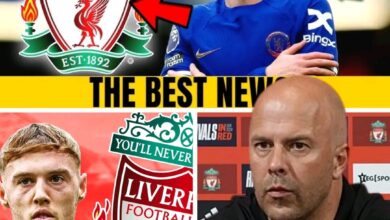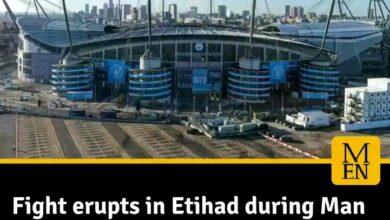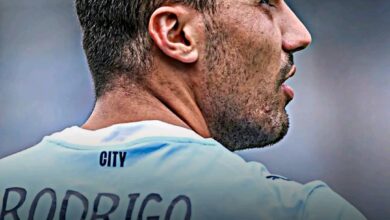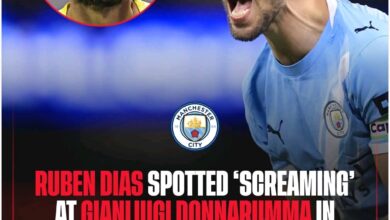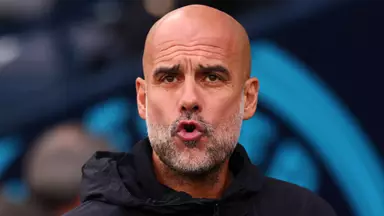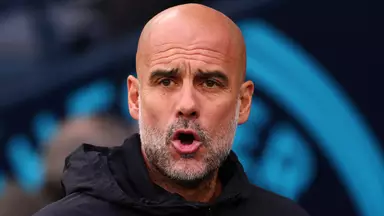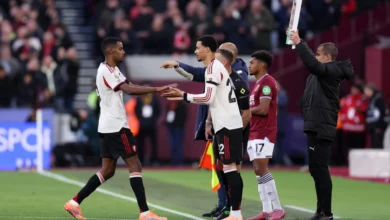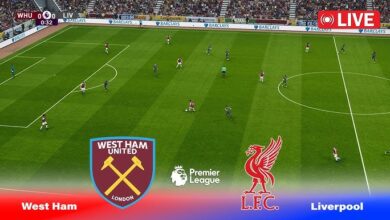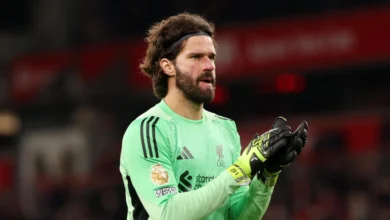Man Utd ROCKED by Man City transfer bombshell
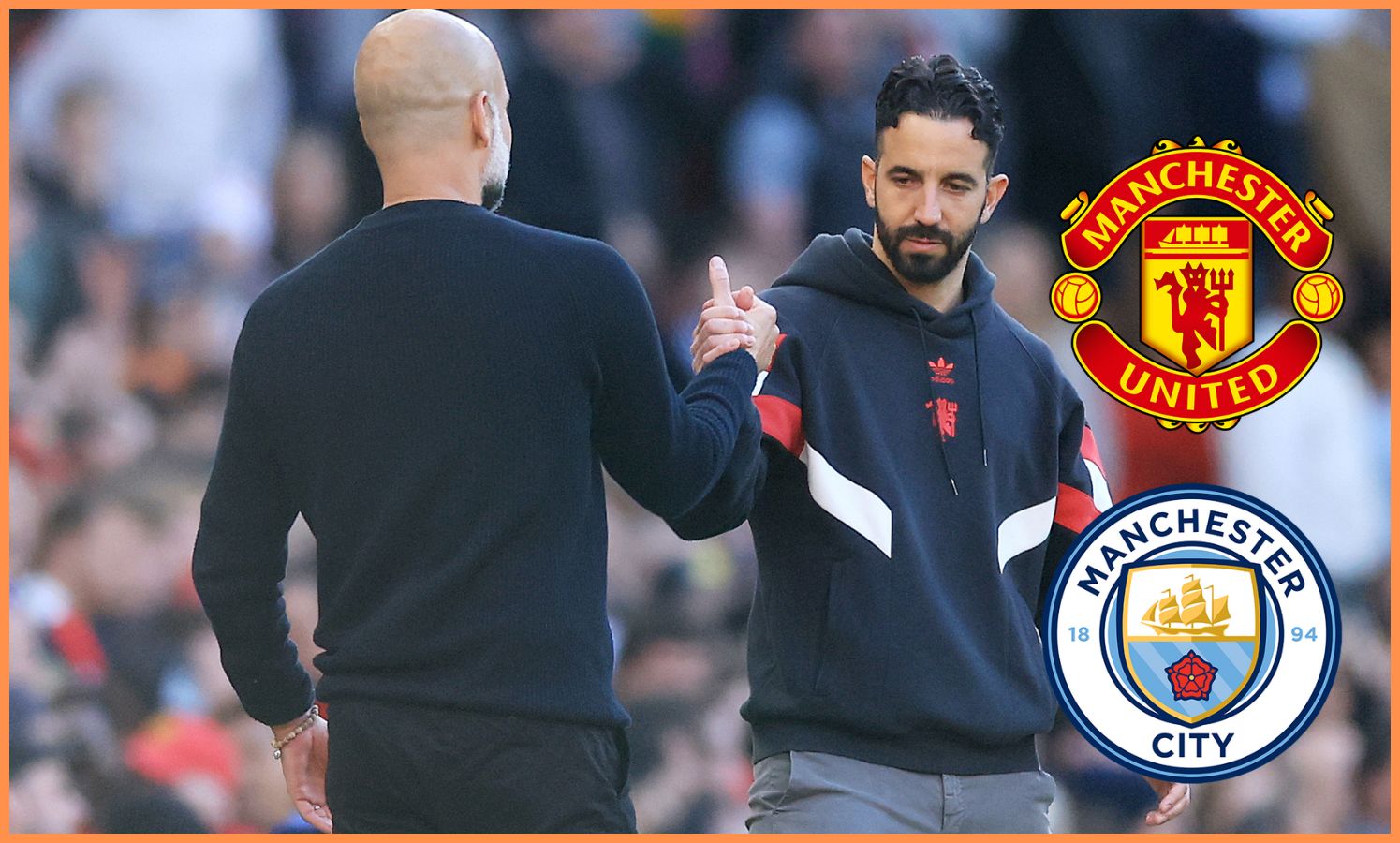
The summer transfer window of 2025 has already begun to showcase the intricate web of relationships and dependencies that define modern football’s transfer market. Manchester United’s attempts to offload young Argentine winger Alejandro Garnacho have hit an unexpected roadblock, with Napoli’s newfound interest in Manchester City’s Jack Grealish creating a domino effect that could significantly impact the Red Devils’ transfer strategy.
The Grealish Factor: A Star in Limbo
Jack Grealish’s situation at Manchester City represents one of the most compelling narratives of the current transfer window. The English international, who made a £100 million move from Aston Villa to the Etihad Stadium in 2021, has found himself increasingly marginalized under Pep Guardiola’s tactical system. What was once heralded as one of the Premier League’s most exciting signings has transformed into a cautionary tale about the complexities of elite-level football adaptation.
The statistics paint a stark picture of Grealish’s diminished role at City. Starting just seven Premier League matches last season, with only one of those appearances coming in 2025, the 29-year-old has become something of a peripheral figure in Guardiola’s plans. This dramatic reduction in playing time for a player of Grealish’s caliber and price tag has inevitably led to speculation about his future, with multiple clubs across Europe monitoring his situation.
Grealish’s current estimated transfer value stands at €43.7 million, according to market valuations, with a range between €39.3 million and €48 million. This represents a significant depreciation from his record-breaking transfer fee, reflecting both his reduced playing time and the natural market adjustment that occurs when a player’s stock falls. For potential suitors, this presents an opportunity to acquire a proven Premier League performer at a fraction of his original cost.
Napoli’s Strategic Pivot
Napoli’s emergence as serious contenders for Grealish’s signature represents a fascinating development in the Serie A champions’ transfer strategy. Having won their first Scudetto in over three decades during the 2022-23 season, Napoli have been looking to build upon that success and establish themselves as a consistent force in European football.
The Italian club’s interest in Grealish appears to be part of a broader strategy to add Premier League-proven quality to their squad. The English winger’s ability to operate across multiple positions in the attacking third, combined with his experience in high-pressure situations, makes him an attractive proposition for a club looking to compete on multiple fronts.
However, Napoli’s pursuit of Grealish is not without its complications. According to reports from The Telegraph’s Matt Law, the Serie A champions would require Grealish to accept a significant reduction in his current wages to make the transfer financially viable. This wage adjustment reflects the economic realities of Serie A compared to the Premier League, where even successful clubs like Napoli operate with considerably lower salary budgets than their English counterparts.
The financial aspect of any potential Grealish transfer to Napoli highlights one of the key challenges facing modern football transfers. While the player’s transfer fee may be manageable for the Italian club, the ongoing salary commitments represent a more significant hurdle. Grealish’s current Manchester City contract reportedly places him among the higher earners at the club, and any move to Serie A would likely require him to accept terms that reflect the different economic landscape of Italian football.
The Garnacho Conundrum
Alejandro Garnacho’s situation at Manchester United adds another layer of complexity to this transfer narrative. The 20-year-old Argentine international has found himself at odds with United manager Ruben Amorim, leading to speculation about his future at Old Trafford. The reported “bust-up” following the Europa League final has seemingly pushed the relationship between player and manager beyond repair, making a summer exit increasingly likely.
Garnacho’s emergence as one of Manchester United’s most promising young talents makes his potential departure all the more significant. Having broken through the academy system and established himself as a regular first-team player, the winger represents the type of homegrown talent that clubs typically build their future around. His pace, direct running, and ability to create chances from wide positions have made him a fan favorite and a valuable asset for the club.
The timing of Garnacho’s potential exit is particularly noteworthy given Manchester United’s current transition period. Under new ownership and with a relatively new manager in Amorim, the club is attempting to rebuild its identity and playing style. Losing a young, talented player like Garnacho during this crucial period could set back their long-term planning and development.
Napoli’s previous interest in Garnacho had positioned them as frontrunners for his signature, with the Italian club reportedly viewing him as a key addition to their attacking options. The young Argentine’s profile – combining youth, potential, and proven Premier League experience – aligned perfectly with Napoli’s recruitment strategy. However, their shift in focus toward Grealish has created uncertainty about Garnacho’s future destination.
The Domino Effect
The interconnected nature of these transfer situations illustrates the complex dynamics that govern modern football’s transfer market. Napoli’s decision to prioritize Grealish over Garnacho doesn’t exist in isolation; it has immediate consequences for Manchester United’s transfer planning and potentially affects the broader market for both players.
For Manchester United, Napoli’s pivot toward Grealish represents a significant complication in their efforts to generate funds through player sales. The club has been looking to balance their books and create space for new signings, making Garnacho’s sale an important component of their summer strategy. With one of the primary suitors now focusing elsewhere, United may need to adjust their expectations regarding both the timeline and the financial terms of any potential Garnacho departure.
The situation also highlights the increasing sophistication of club transfer strategies, where multiple targets and contingency plans are constantly being evaluated and re-evaluated based on changing circumstances. Napoli’s ability to switch between targets demonstrates the fluid nature of modern transfer negotiations, where clubs must remain adaptable to capitalize on emerging opportunities.
Alternative Destinations and Market Dynamics
While Napoli’s interest may have waned, both Grealish and Garnacho continue to attract attention from other quarters. For Grealish, several Premier League clubs have been mentioned as potential destinations, each offering different advantages and challenges.
Tottenham Hotspur, under new management with Thomas Frank having joined from Brentford, represents an intriguing option for Grealish. Frank’s attacking philosophy and his track record of improving players could provide the perfect environment for Grealish to rediscover his best form. The move would also allow Grealish to remain in London, potentially simplifying the personal aspects of any transfer.
Aston Villa’s rumored interest in re-signing their former star adds an emotional dimension to Grealish’s potential moves. A return to Villa Park would represent a homecoming for the Birmingham-born player, offering him the chance to rebuild his career at the club where he first established himself as a Premier League star. The narrative appeal of such a move, combined with Villa’s recent progress under Unai Emery, makes this an attractive proposition for all parties involved.
Chelsea’s tentative interest in Grealish reflects their ongoing search for attacking reinforcements, particularly players who can operate effectively from wide positions. The London club’s financial resources and ambitious project under their current ownership could make them serious contenders if they decide to pursue their interest more aggressively.
For Garnacho, the situation is somewhat different but equally complex. Reports suggest that the young Argentine is keen to remain in the Premier League, viewing England as the best environment for his continued development. This preference could limit his options but also ensures that any move would likely involve a club capable of offering consistent first-team football and Champions League ambitions.
Chelsea’s interest in Garnacho aligns with their strategy of investing in young, high-potential players who can contribute immediately while also representing long-term value. However, Manchester United’s reluctance to sell to a direct rival could complicate any potential negotiations. The history of contentious transfers between the two clubs, combined with the strategic implications of strengthening a competitor, makes this a politically sensitive situation for United’s board.
Financial Implications and Market Valuations
The financial aspects of these potential transfers reveal important trends in the modern football market. Grealish’s situation demonstrates how quickly player valuations can change based on performance and playing time. His current market value, while still substantial, represents a significant decrease from his peak valuation, illustrating the risks associated with high-profile transfers that don’t work out as planned.
For Manchester City, moving Grealish would represent both a financial loss and an admission that one of their most expensive signings hasn’t worked out as hoped. However, it would also free up significant salary space and potentially provide funds for other transfer targets. The club’s ability to absorb such losses while continuing to compete at the highest level demonstrates the financial advantages enjoyed by the most successful clubs.
Manchester United’s situation with Garnacho is markedly different. As a homegrown player who has come through their academy system, any transfer fee received would represent pure profit from an accounting perspective. This makes his potential sale particularly attractive from a Financial Fair Play standpoint, as it would provide funds for new signings without the associated amortization costs of purchased players.
The reported interest from multiple clubs in both players suggests that their market values remain robust despite their respective challenges. This continued demand reflects the premium placed on Premier League experience and the recognition that both players possess the technical ability and physical attributes to succeed at the highest level.
Tactical Considerations and Playing Styles
The tactical fit of both players at their potential new clubs represents a crucial factor in determining where they might end up. Grealish’s playing style, characterized by his ability to drift inside from wide positions, create space through his dribbling, and provide key passes in the final third, would suit several different tactical systems.
At Napoli, Grealish could potentially fill the creative void left by some of their departed stars from the Scudetto-winning season. His ability to operate in tight spaces and create chances for teammates aligns well with Serie A’s tactical sophistication and emphasis on technical ability. The slower pace of Italian football compared to the Premier League might also allow Grealish to showcase his technical skills more effectively.
Garnacho’s direct running style and pace make him an attractive option for clubs looking to add width and attacking thrust to their play. His ability to beat defenders one-on-one and create chances from seemingly nothing represents exactly the type of unpredictable attacking threat that modern football values highly. The young Argentine’s adaptability to different tactical systems, having played under multiple managers at United, also adds to his appeal.
The Broader Transfer Market Context
These transfer situations exist within the broader context of a summer transfer window that promises to be particularly active. The combination of Financial Fair Play pressures, squad overhauls at multiple top clubs, and the ongoing economic effects of recent global events has created a complex market environment where clubs must be particularly strategic in their approach.
The interconnected nature of these deals – where one club’s decision affects multiple other potential transfers – illustrates the sophisticated planning required in modern football recruitment. Clubs now employ extensive scouting networks, data analysis teams, and strategic planners to navigate these complex situations and identify opportunities to strengthen their squads while managing financial constraints.
Future Implications and Long-term Consequences
The resolution of these transfer situations will have implications that extend far beyond the immediate summer window. For Manchester United, successfully managing Garnacho’s departure while securing adequate replacement options will be crucial to their continued development under Amorim. The funds generated from his sale could be reinvested in other areas of the squad, potentially addressing more pressing needs.
Napoli’s ability to secure either Grealish or identify alternative targets will significantly impact their chances of building upon their recent success. The club’s transfer strategy during this window will largely determine whether they can establish themselves as consistent challengers in both Serie A and European competition.
The broader implications for the transfer market include the continued demonstration of how quickly situations can change and how clubs must remain flexible in their planning. The ability to adapt to changing circumstances, identify alternative targets, and capitalize on unexpected opportunities has become increasingly important in modern football recruitment.
Conclusion
The intertwining stories of Jack Grealish and Alejandro Garnacho represent a fascinating case study in modern football’s transfer complexities. What began as separate situations involving two different players at different clubs has evolved into a interconnected narrative that highlights the sophisticated planning and strategic thinking required in today’s market.
Napoli’s shift from Garnacho to Grealish has created unexpected complications for Manchester United while potentially opening new opportunities for the Italian club. The resolution of these situations will depend on numerous factors, including player preferences, financial negotiations, and the strategic priorities of the clubs involved.
As the summer transfer window progresses, these stories will continue to evolve, potentially creating new opportunities and challenges for all parties involved. The ultimate destinations of both Grealish and Garnacho will provide important insights into the current state of the transfer market and the strategic thinking of Europe’s top clubs.
The complexity of these situations serves as a reminder that modern football transfers are rarely straightforward affairs. Instead, they represent intricate negotiations involving multiple parties, competing interests, and constantly changing circumstances. Success in this environment requires not just financial resources, but also strategic thinking, adaptability, and the ability to capitalize on unexpected opportunities as they arise.






